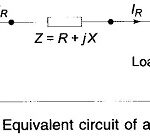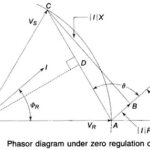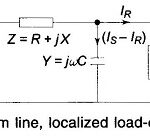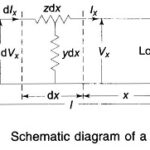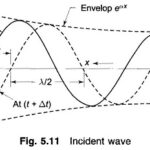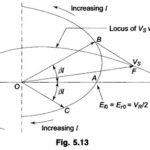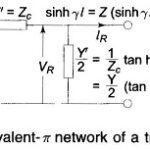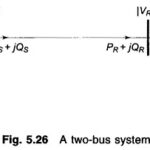Performance of Power Transmission Articles:
Introduction to Power Transmission Line: Introduction to Power Transmission Line deals primarily with the characteristics and performance of transmission lines. A problem of major importance in power systems is the flow of load over transmission lines such that the voltage at … (Read More)
Equivalent Circuit of Short Transmission Line | Phasor Diagram of Short Transmission Line: For Short Transmission Line of length 100 km or less, the total 50 Hz shunt admittance (jωCl) is small enough to be negligible resulting in the simple Equivalent Circuit … (Read More)
Voltage Regulation of Transmission Line: Voltage Regulation of Transmission Line is defined as the rise in voltage at the receiving-end, expressed as percentage of full load voltage, when full load at a specified power factor is thrown off, i.e. where |VR0| = magnitude … (Read More)
Medium Transmission Line: For lines more than 100 km long, charging currents due to shunt admittance cannot be neglected. For lines in range 100 km to 250 km length, it is sufficiently accurate to lump all the line admittance at the … (Read More)
Long Transmission Line: For lines over 250 km, the fact that the parameters of a line are not lumped but distributed uniformly throughout its length, must be considered. Figure 5.10 shows one phase and the neutral return (of zero impedance) of … (Read More)
Transmission Lines and Waveguides: As we know already that, γ is a complex number of Transmission Lines and Waveguides which can be expressed as The real part α is called the attenuation constant and the imaginary part β is called the phase … (Read More)
Ferranti Effect in Transmission Line: The effect of the line capacitance is to cause the no-load receiving-end voltage to be more than the sending-end voltage. The effect becomes more pronounced as the line length increases. This phenomenon is known as the … (Read More)
Tuned Power Lines in Transmission: Equation (5.23) characterizes the performance of a Tuned Power Lines in long Transmission line. For an overhead line shunt conductance G is always negligible and it is sufficiently accurate to neglect line resistance R as well. … (Read More)
Equivalent Circuit of Long Transmission Line | π and T network: So far as the end conditions are concerned, the Equivalent Circuit of Long Transmission Line can be established in the form of a T- or π-network. The parameters of the equivalent … (Read More)
Power Flow through Transmission Line: So far the transmission line performance equation was presented in the form of voltage and current relationships between sending-and receiving-ends. Since loads are more often expressed in terms of real (watts/kW) and reactive (VARs/kVAR) power, it … (Read More)
Methods of Voltage Control in Transmission Lines: Practically each equipment used in power system are rated for a certain voltage with a permissible band of voltage variations. Voltage at various buses must, therefore, be controlled within a specified regulation figure. This … (Read More)
Series and Shunt Compensation of Transmission Lines: The performance of long EHV AC transmission systems can be improved by reactive compensation of series or shunt (parallel) type. Series capacitors and shunt reactors are used to reduce artificially the series reactance and … (Read More)
